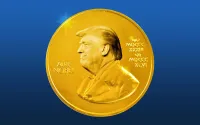The uprising in Bolivia which ousted a president attracted an unusually large amount of coverage in North American and European newspapers. In a way, this is surprising, since countries like Bolivia are normally ignored (or given minor coverage) even in the best newspapers. This may merely be the effect of the cumulation of events of the last two years reflecting a changing politics in Latin America. Latin America may be reentering the world's political focus.
In the 1960s, "revolution" had been a pervasive theme in Latin America. Cuba became a symbol of the march to socialism. Che Guevara symbolized and practiced what was called "focoismo" or a "revolution within a revolution" (and which led to Guevara's own death in - Bolivia). Dependency was the new slogan of Latin American intellectuals, a concept that had evolved out of the core-periphery concepts and "desarollismo" (developmentalism) first elaborated by Raúl Prebisch and the U.N.'s Economic Commission for Latin America. These intellectuals began to be openly opposed to the Latin American Communist parties, regarding them as reformist, anti-revolutionary de facto collaborators with the United States and world capitalism. Guerrilla movements were started in a large number of countries and seemed to be very powerful. In Chile, Salvador Allende was elected on a program of a transition to socialism.
The United States began to favor military takeovers of a number of regimes (Brazil, Chile, Argentina, Uruguay) to stem the tide. The tide of revolution began to wane in the 1970s, although the Sandinistas in Nicaragua represented a last burst forward. In the 1980s, the stagnation in the world-economy began to take its toll on Latin America. Mexico led the Latin American band by inaugurating the "debt crisis" in 1982 (although Poland had actually beaten it to the world starting-line in 1980). The 1980s saw a retreat from developmentalism, a new drive to "democracy" (that is, electoral politics), and a general calming of the waters. The various guerrilla movements in Central America essentially gave up, obtaining a face-saving right to (re)enter electoral politics. The collapse of the Soviet Union and of the communisms in east-central Europe disoriented and disarmed much of the Latin American left.
The 1990s were a period in which the United States felt it could breathe easily in Latin America. Mexico accepted to be part of the North American Free Trade Agreement (NAFTA). And finally, after a half-century of the continuous single-party government of the Partido Revolucionario Institucional (PRI), Mexico elected the leader of a conservative, free-trade-oriented, pro-North American party, Vincente Fox, as president. True, immediately upon the signing of the NAFTA accord, Mexico saw the emergence and survival of a startlingly new type of socio-political movement, the Zapatistas in Chiapas, defending the interests of the repressed Indian populations. And it was attracting a lot of attention and support across the entire world, but the U.S. basically paid no attention to them, possibly because they proclaimed that they were not interested in achieving state power. The U.S. began to promote the idea of a Free Trade Association of the Americas (FTAA, or ALCA) and persuaded Chile to be the first to sign a bilateral agreement of this sort.
Then began a slow rumble of political discontent in Latin America. The forms this took in Ecuador, Peru, Venezuela, Brazil, and Argentina were different in detail. But they all shared one feature. The discontent found its roots in the Indian (or mestizo) populations and in the organized trade-union and peasant sectors of the population. It was the middle classes who were relatively disoriented and unsure where their interests lay. In none of these cases, did a government come into power that was "revolutionary" by 1960s standards. But in each case, there was opposition, more or less overt, to the dictates of the International Monetary Fund (IMF) and to the creation of FTAA. In each case, the United States was unhappy but didn't seem to be able to affect the situation as directly and as rapidly as in the 1970s. There were no right-wing coups à la Pinochet.
This is the background to Bolivia, perhaps the poorest country in South America. Bolivia had actually been the pioneer of the earlier "revolutionary" wave in Latin America. A revolution in 1952 led to the nationalization of the tin mines. The revolution was led by the Central Obrero Boliviano (COB), which had organized the tin miners, most of whom were Indians. The revolution was a great shock to the United States, combining as it did trade-union militancy with claims of the Indian majority to a political role in the state. It took five years to contain it. As tin receded on the world market, many of the Indian producers turned to the production of coca, which brought them income but also the wrath of the U.S. pursuing its anti-drug campaign.
In the last election, the leader of the cocaleros, Evo Morales, heading a movement called Movimiento al Socialismo (MAS), with the support of the COB and of the Indian movements, lost by a very narrow margin to a standard conservative candidate, Gonzalo Sánchez de Lozada. It is said that when Sánchez met Bush in Washington, he joked that he would do as asked but that, if he did, the next time Bush saw him he would probably be in political exile in the U.S. And thus it happened. When Sánchez offered to sell Bolivia's gas as a low price, and proposed on top of that to build the gas pipeline to a port that had once been part of Bolivia but had been won in a war by Chile in the nineteenth century, the country erupted, and first of all the enormous slum areas of the Altiplano, which hovered over the capital city. And suddenly, students and workers marching in the streets (and the COB in an official document) were shouting the praises of Che Guevara.
The United States proclaimed its support for Sánchez, and it got the Secretary-General of the Organization of American States to do the same. But the uprising had been too strong. And the nondescript Vice-President withdrew his support from the government, paving the way for his takeover of the office. Then, a short time after, to everyone's surprise, the conservative government in Colombia, the strongest ally of the United States on the continent, lost the mayoralty elections in Bogotá (as well as in the second city, Medellin) to a trade-union leader and ex-communist, "Lucho" Garzón. The discontents were basically the same: the damage wrought by neo-liberalism and the demands to eradicate coca, as well as in this case discontent with the government's hard line on negotiations with the long-surviving rebel movement, the FARC.
So, no "revolutions" but a series of systematic setbacks to conservative forces and to United States policy. Let us review all that has happened. In Brazil, "Lula" and the Partido dos Trabalhadores (PT) finally won a presidential election. In Argentina, showcase of the IMF, economic collapse and political turmoil in the end produced a president who defied the IMF, got away with it, and then was rewarded with strong political support for his candidates in the major mayoralty elections. In 2003, in a critical vote of the U.N. Security Council on Iraq, the United States failed to get the support of either Mexico or Chile. At Cancún, the opposition to the U.S. proposals was led, and led successfully, by Brazil. And everywhere, there has been the political awakening of the indigenous populations which, in the majority of countries in Latin America, are the majority of the population.
This upsurge has been made possible by two phenomena that have come together. On the one hand, the United States no longer has the power to dictate outcomes in Latin America, especially now that it is tied down in Middle Eastern military commitments. And on the other hand, Latin American political leaders, especially of the center-left, have learned the lesson that they do not have the power to take large, quick steps, but they do have the power to take medium-sized ones, and these can cumulate. Latin America is in the process of taking advantage of U.S. weaknesses. The key battles are two: the degree to which Indian movements and other peasant-based and trade-union movements maintain their vigor and increase their political influence; and whether the negotiations over the FTAA will in fact collapse because of U.S. rigidity over any concessions that are meaningful.






